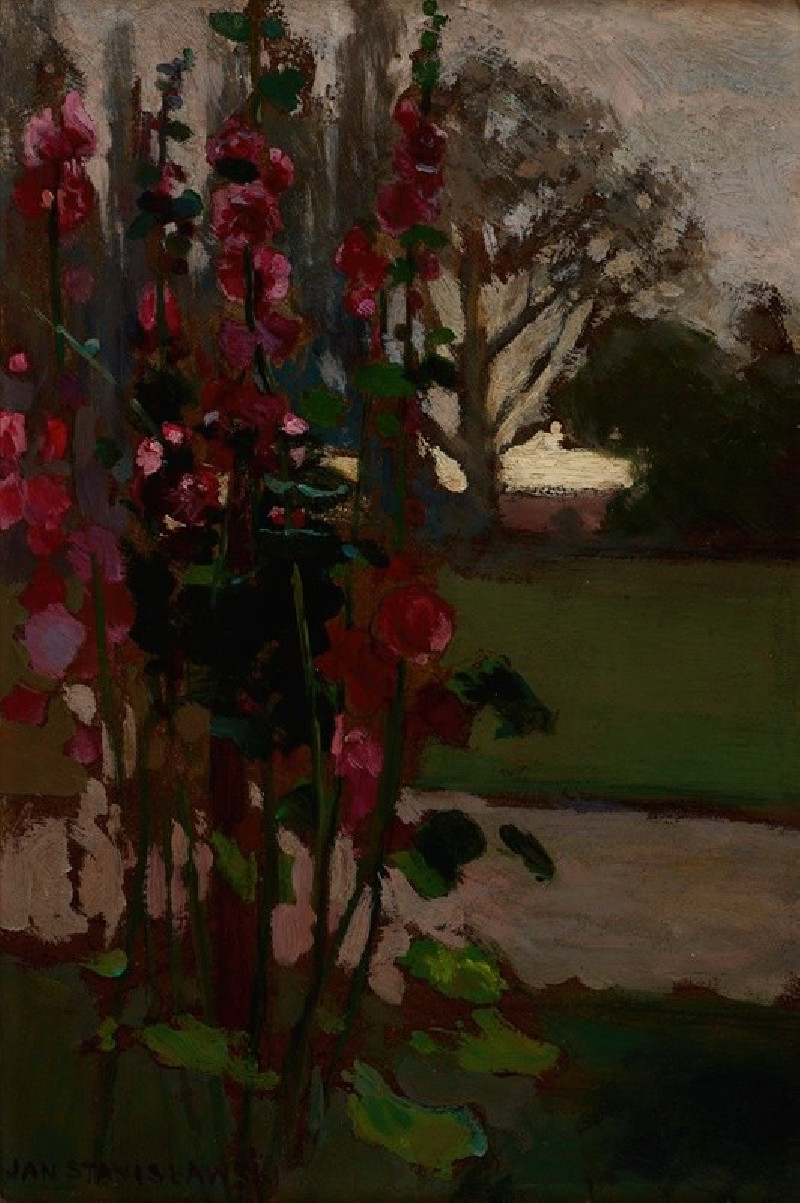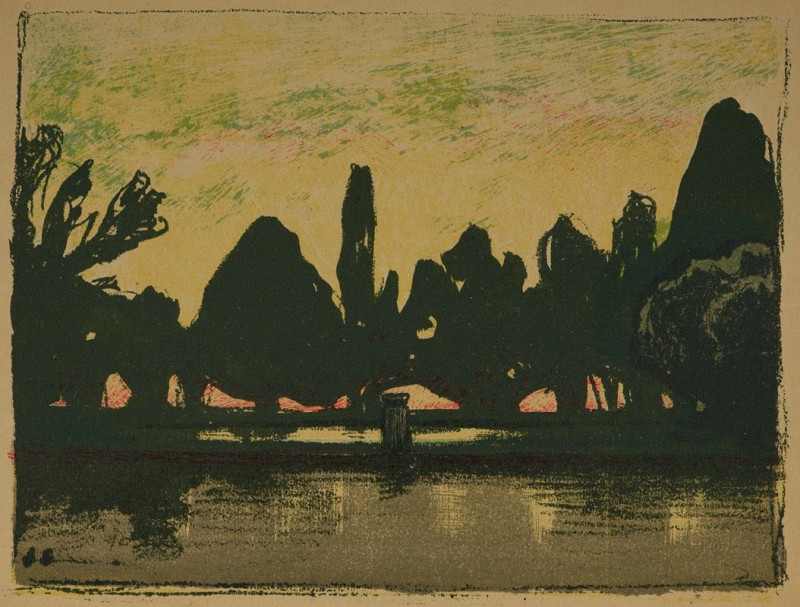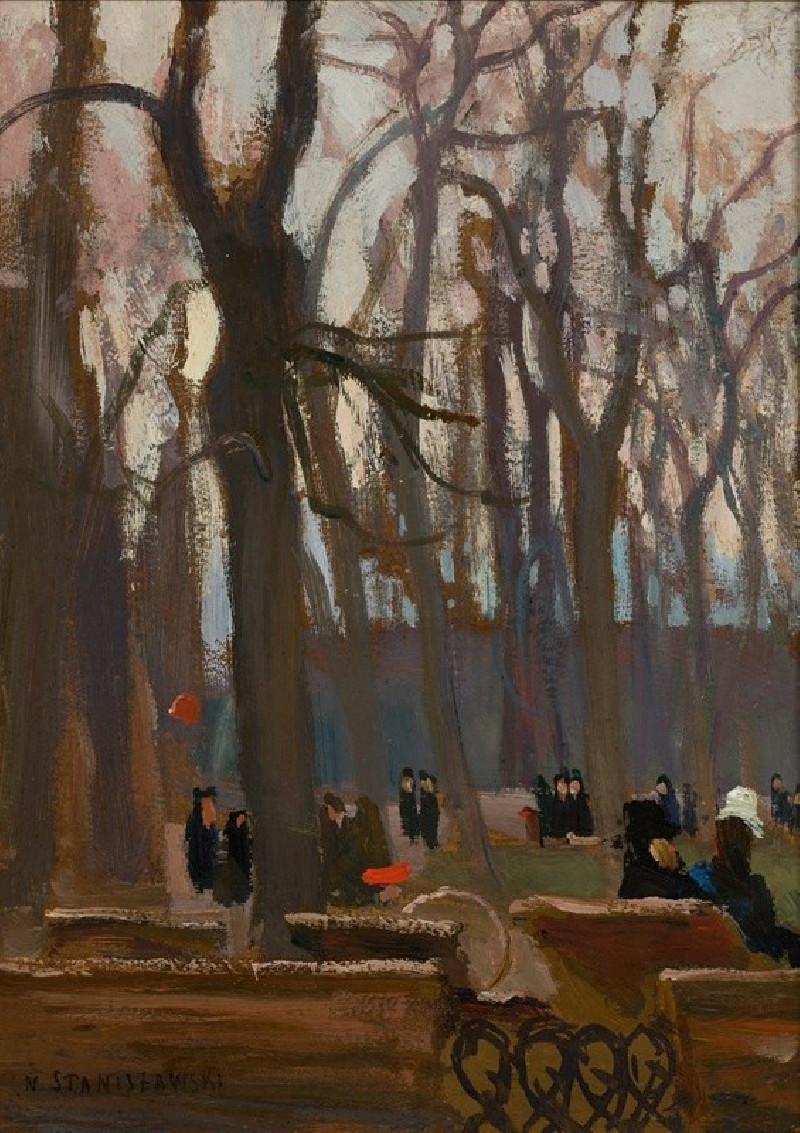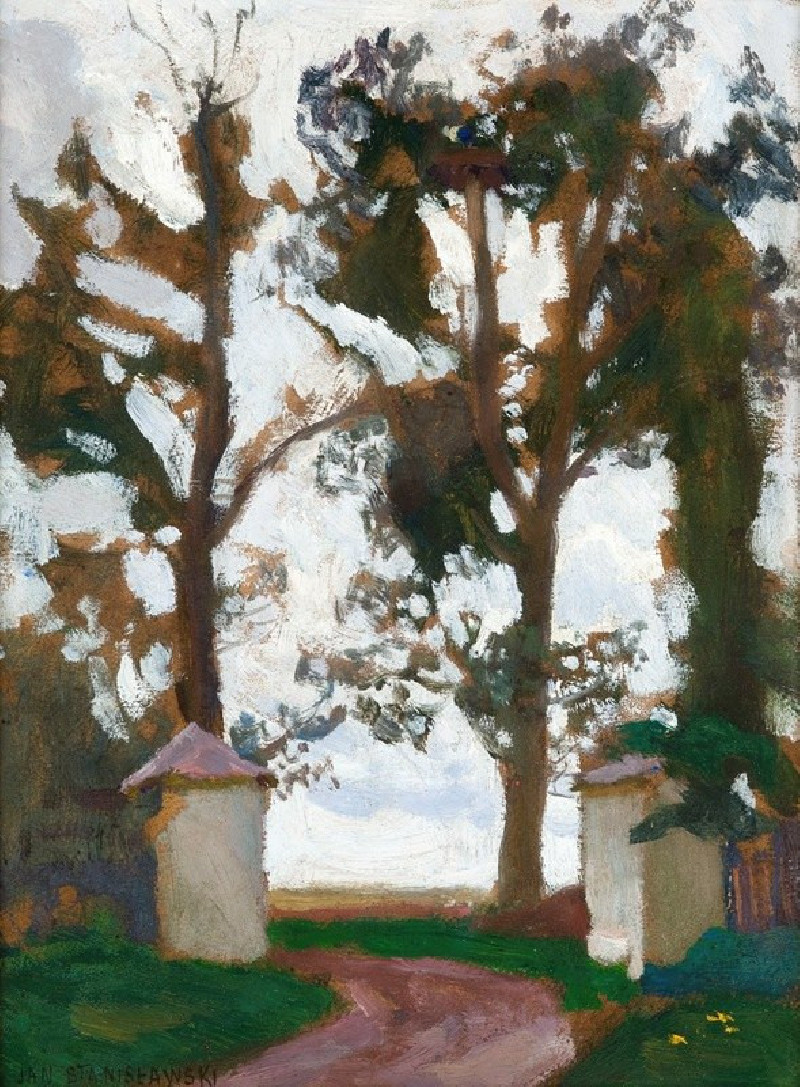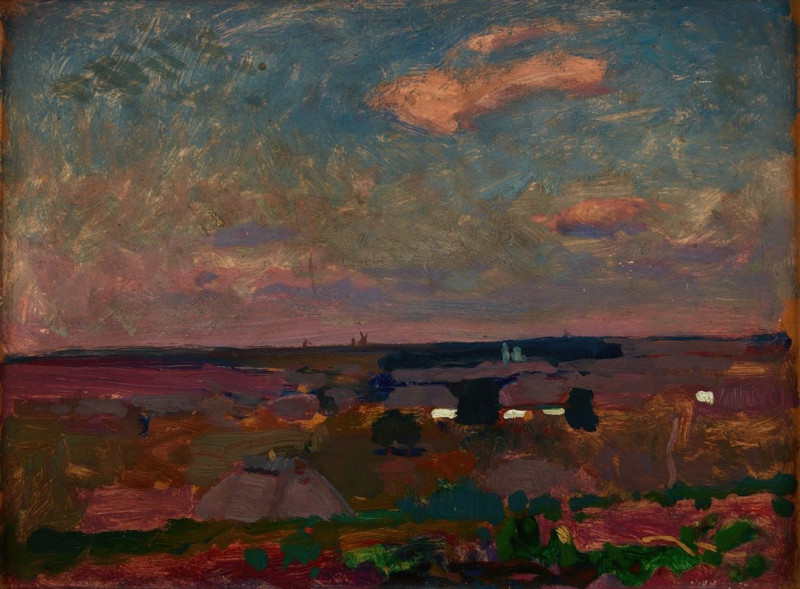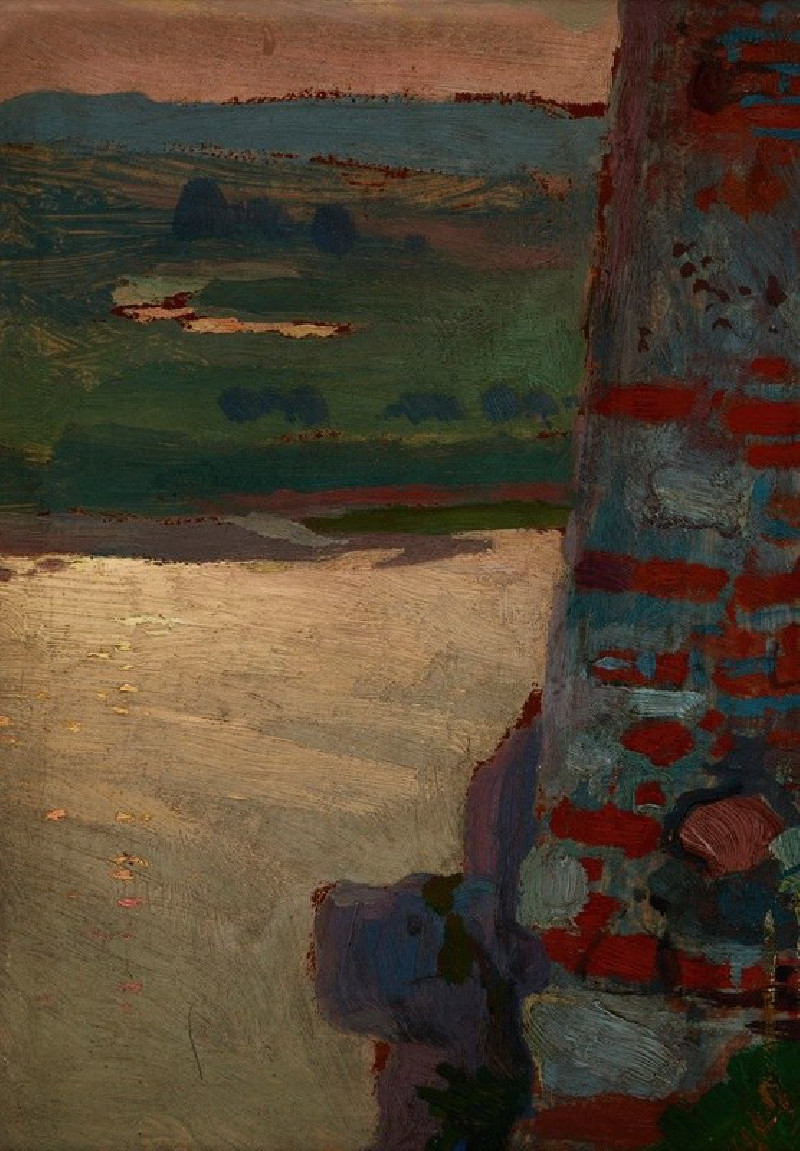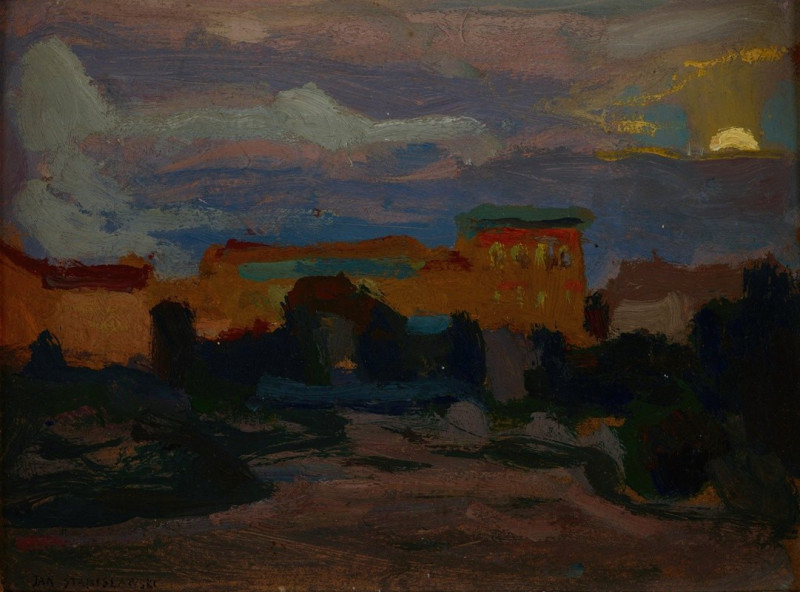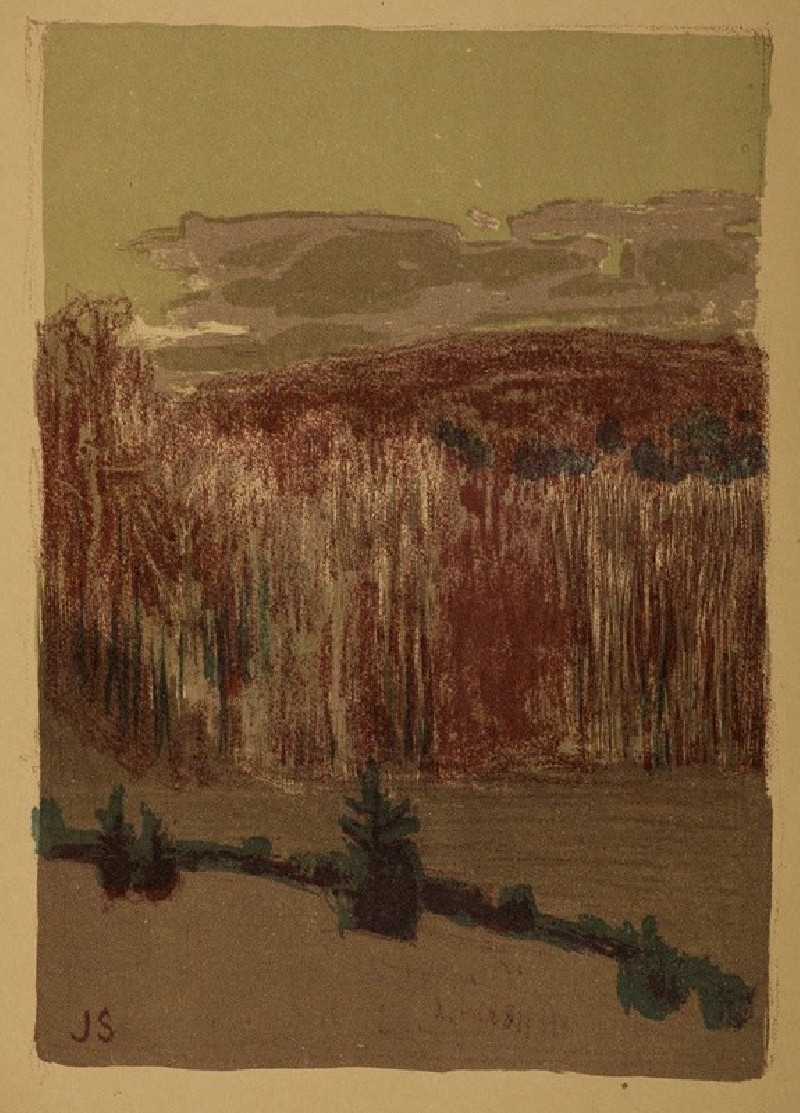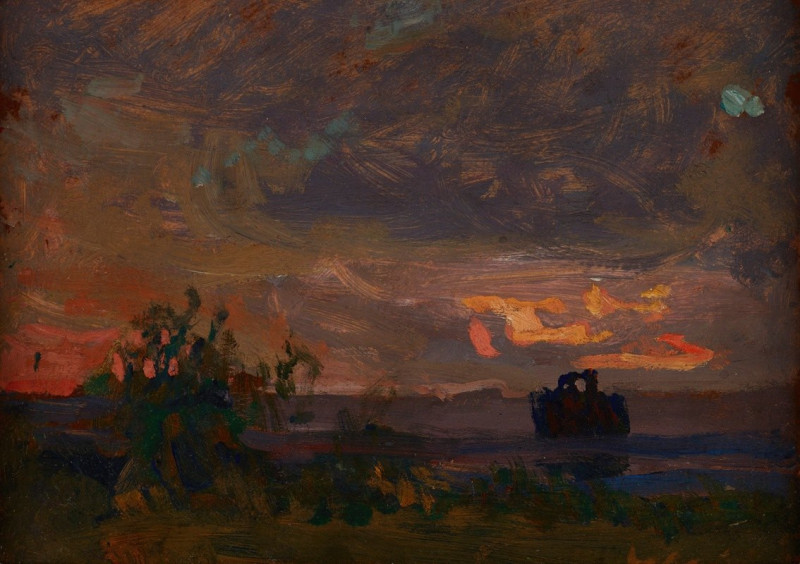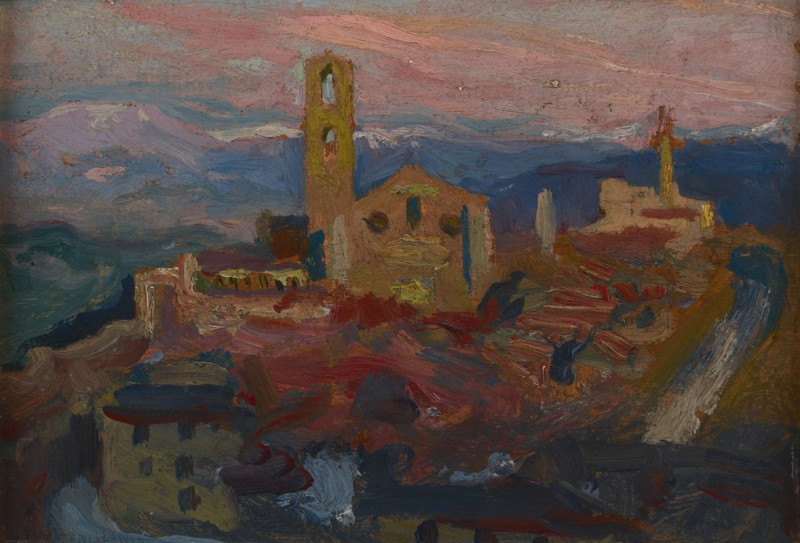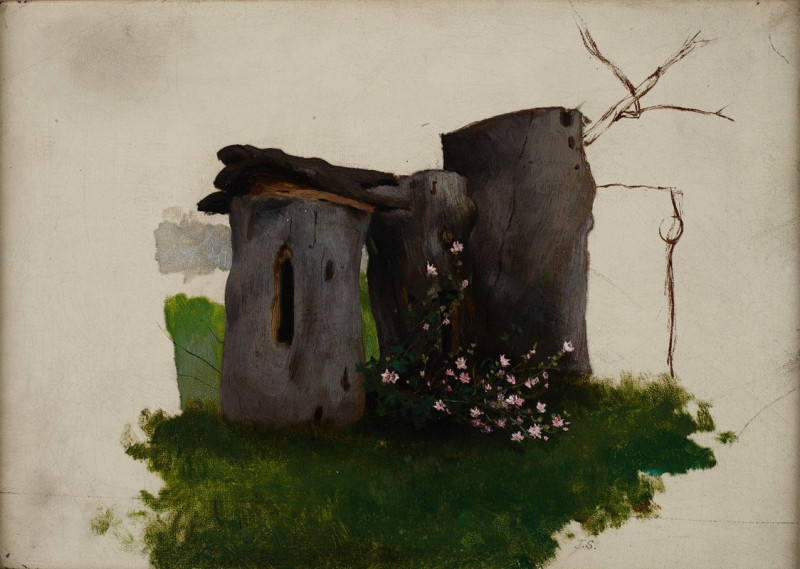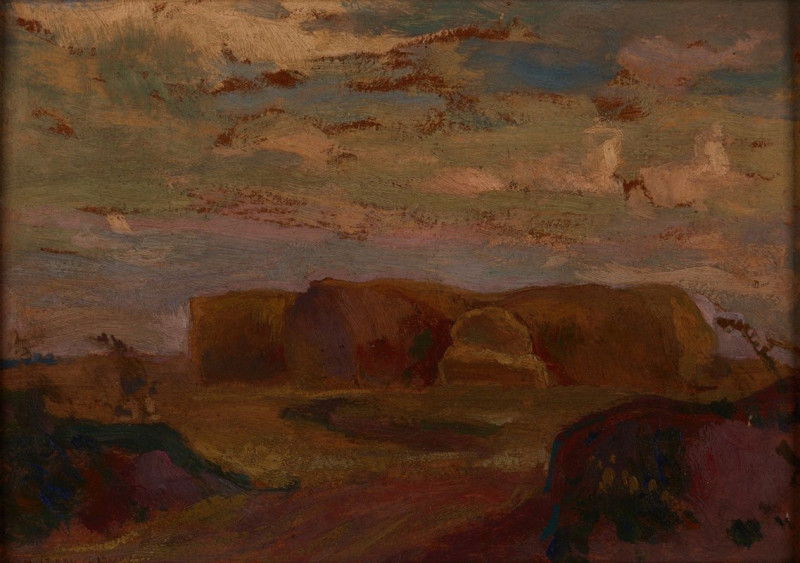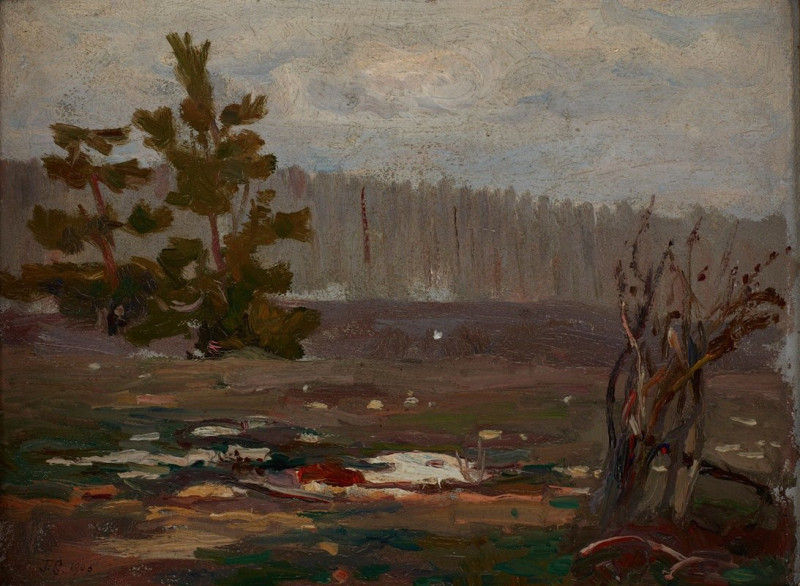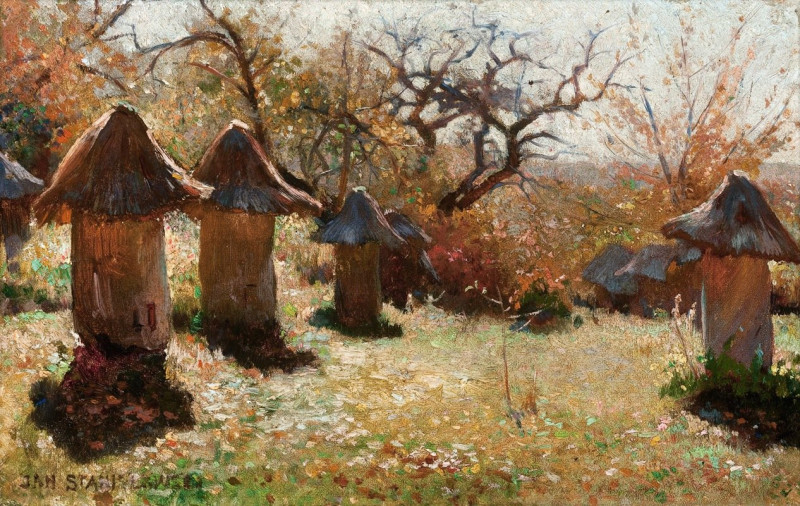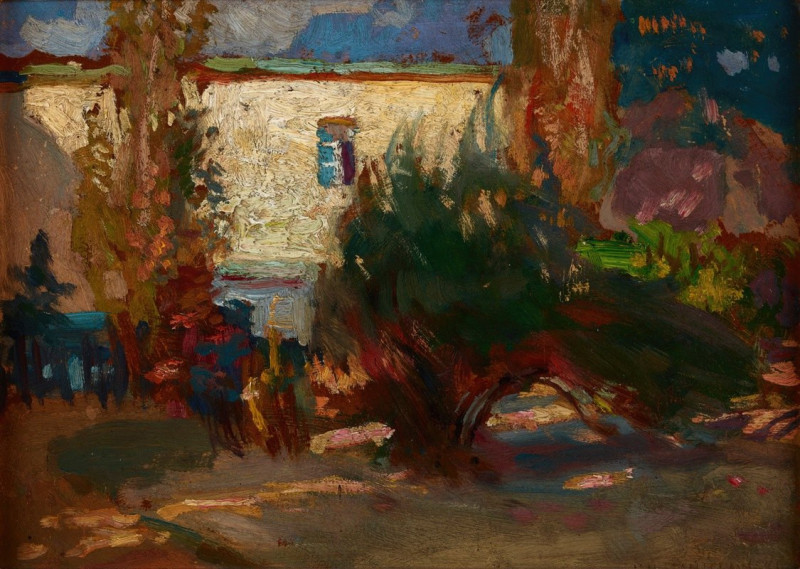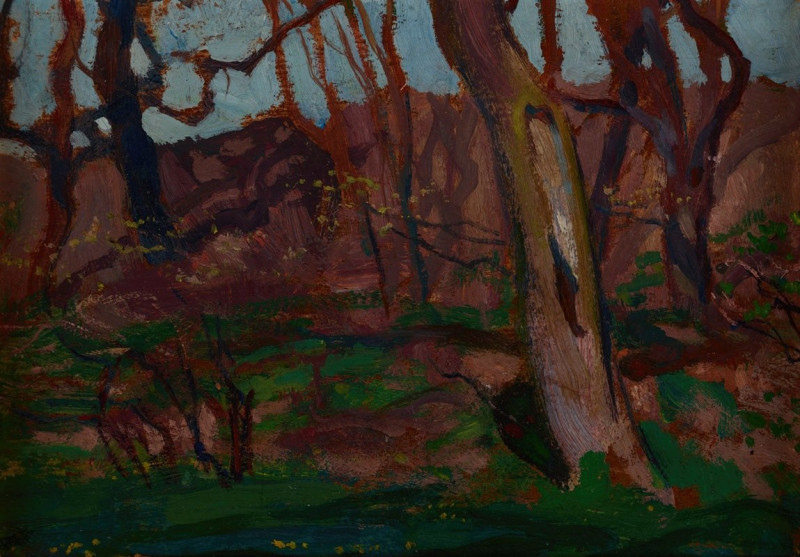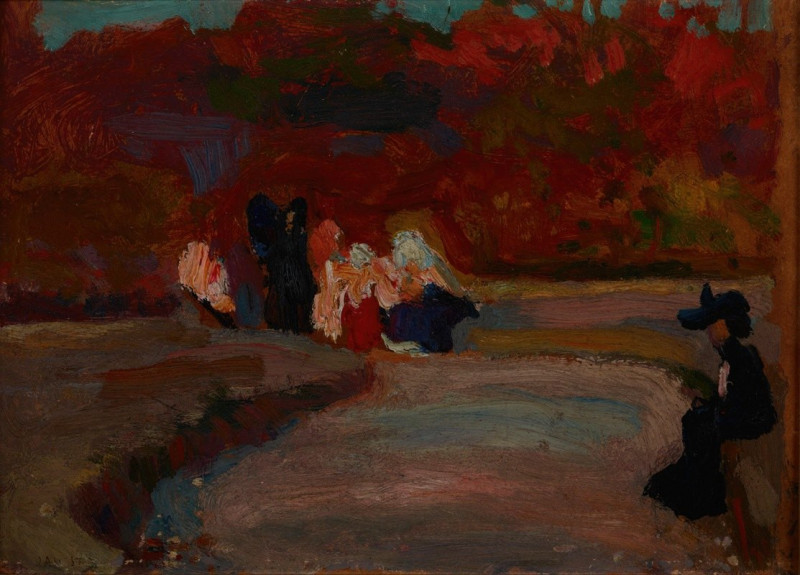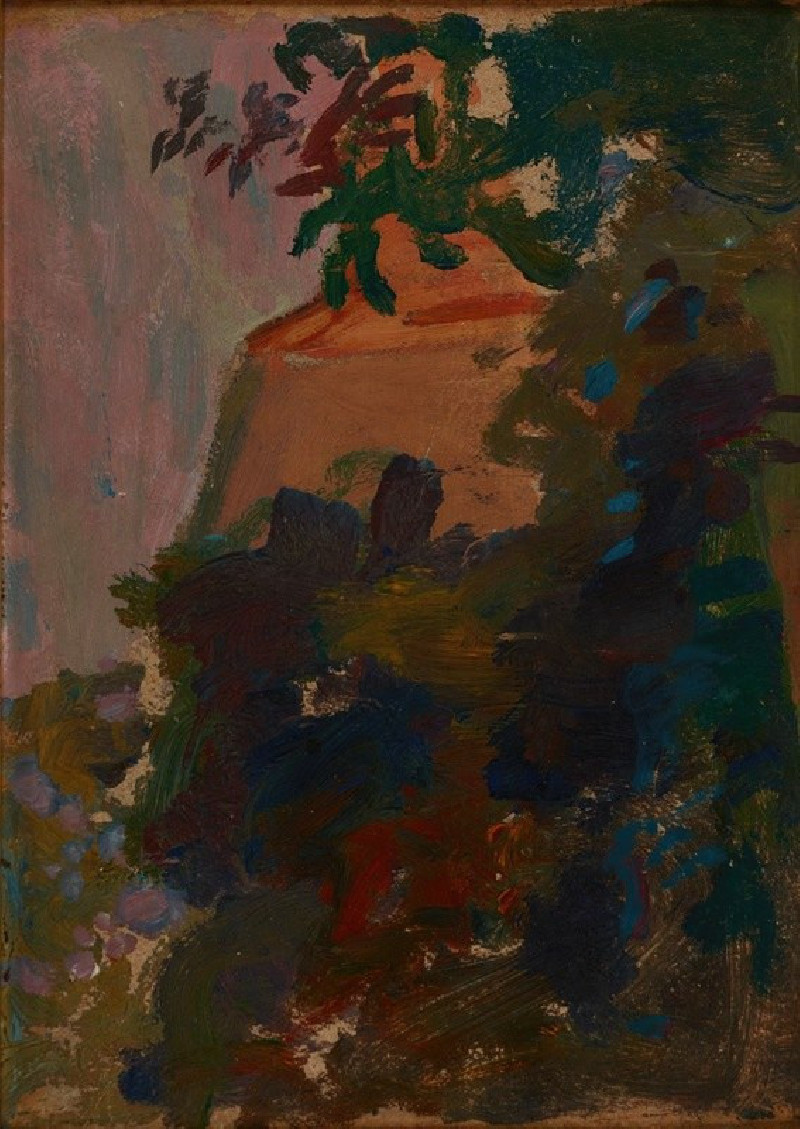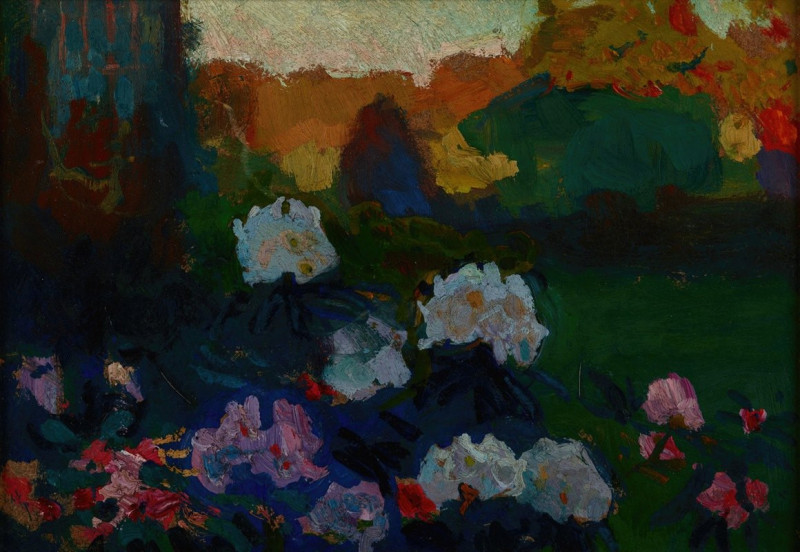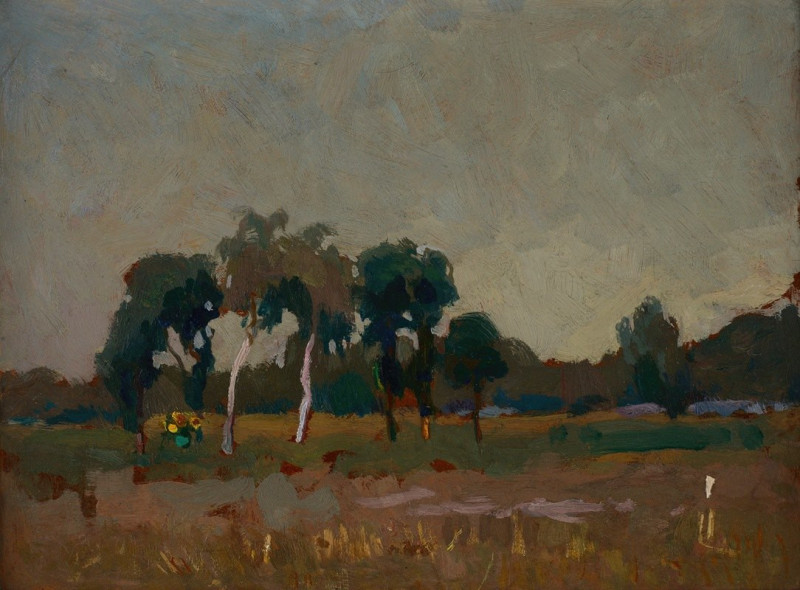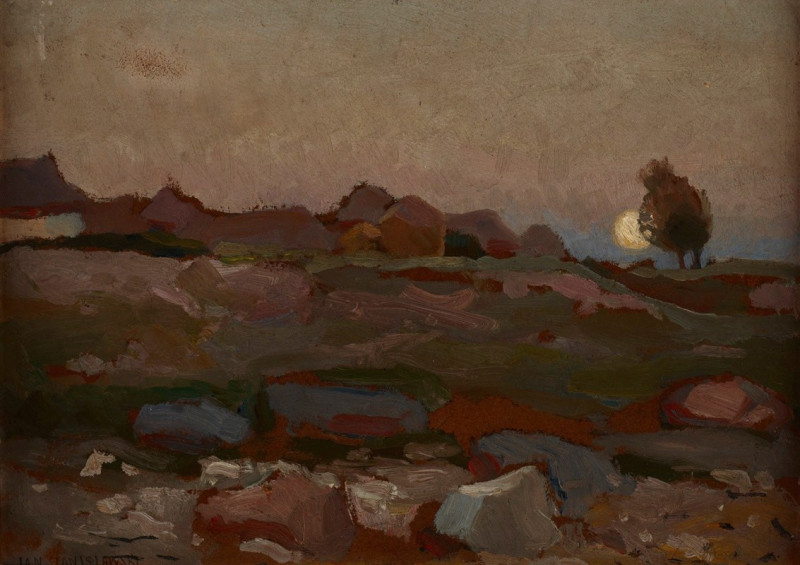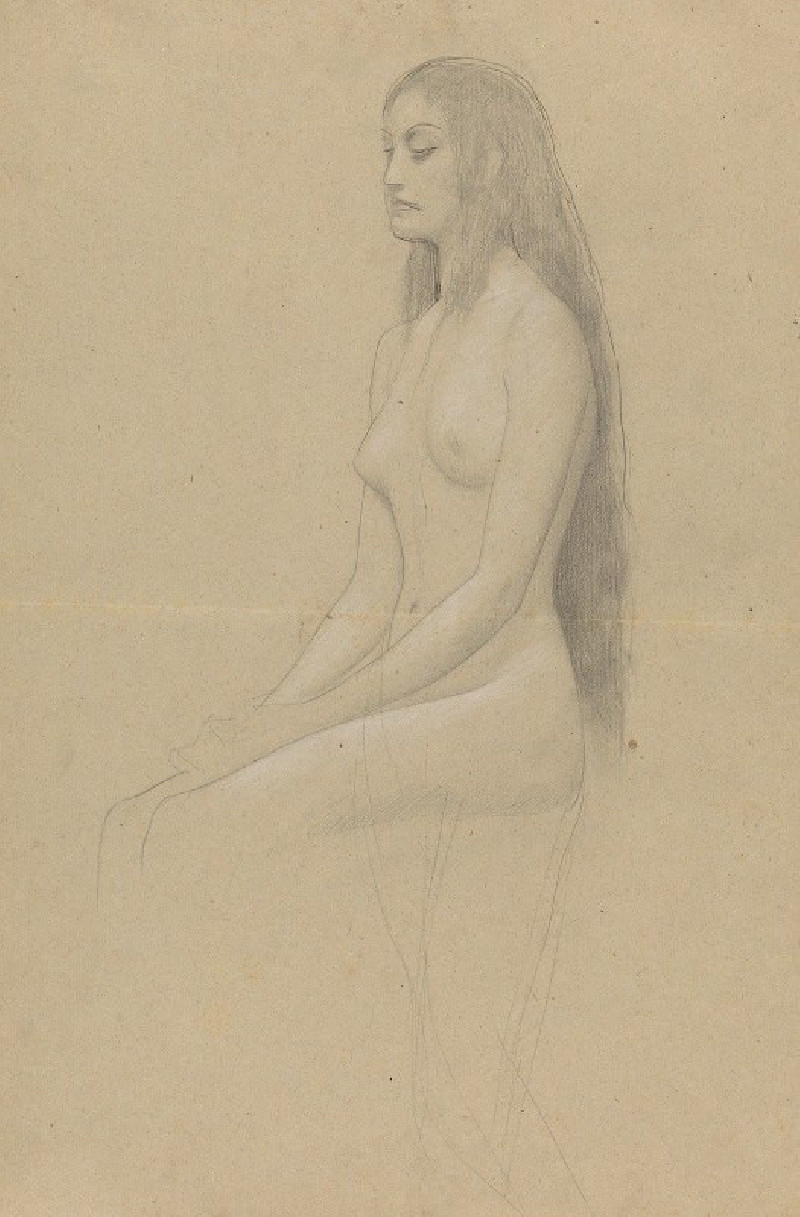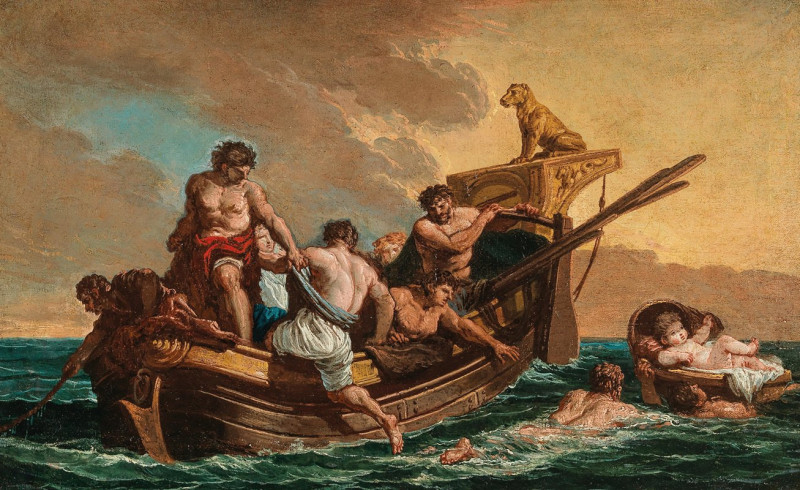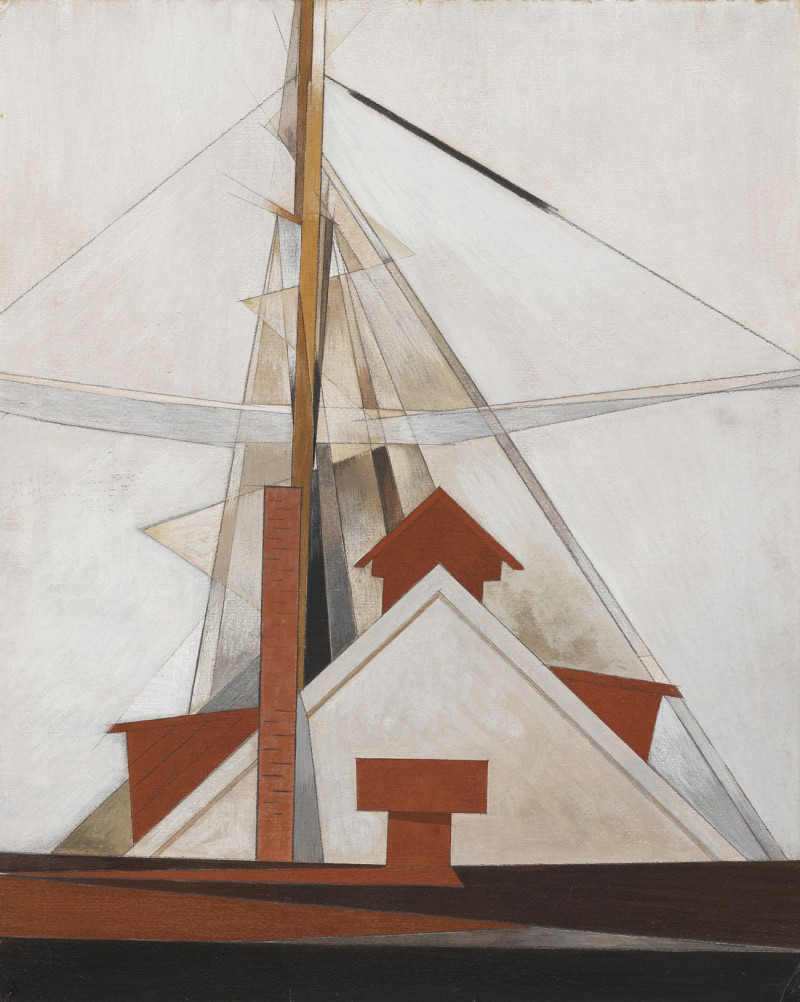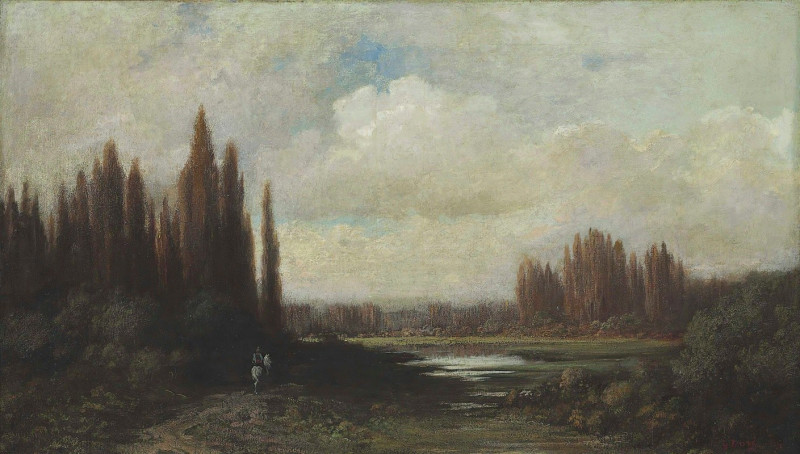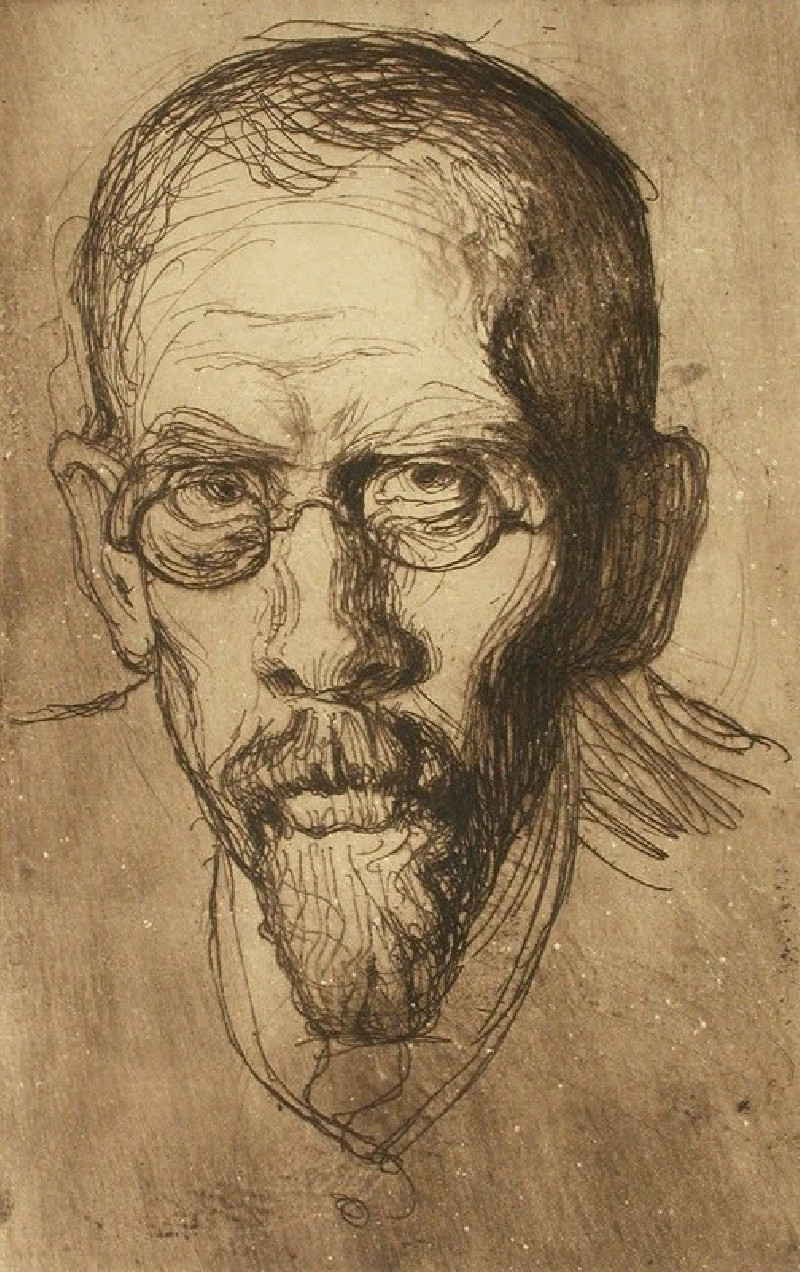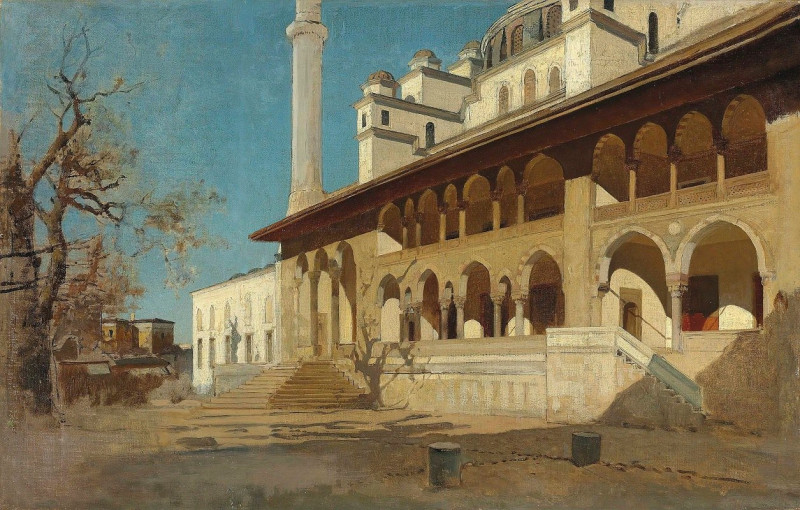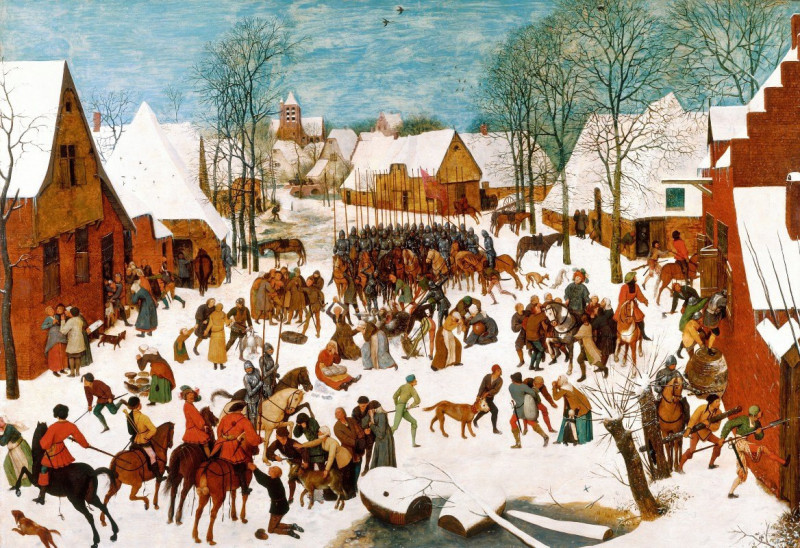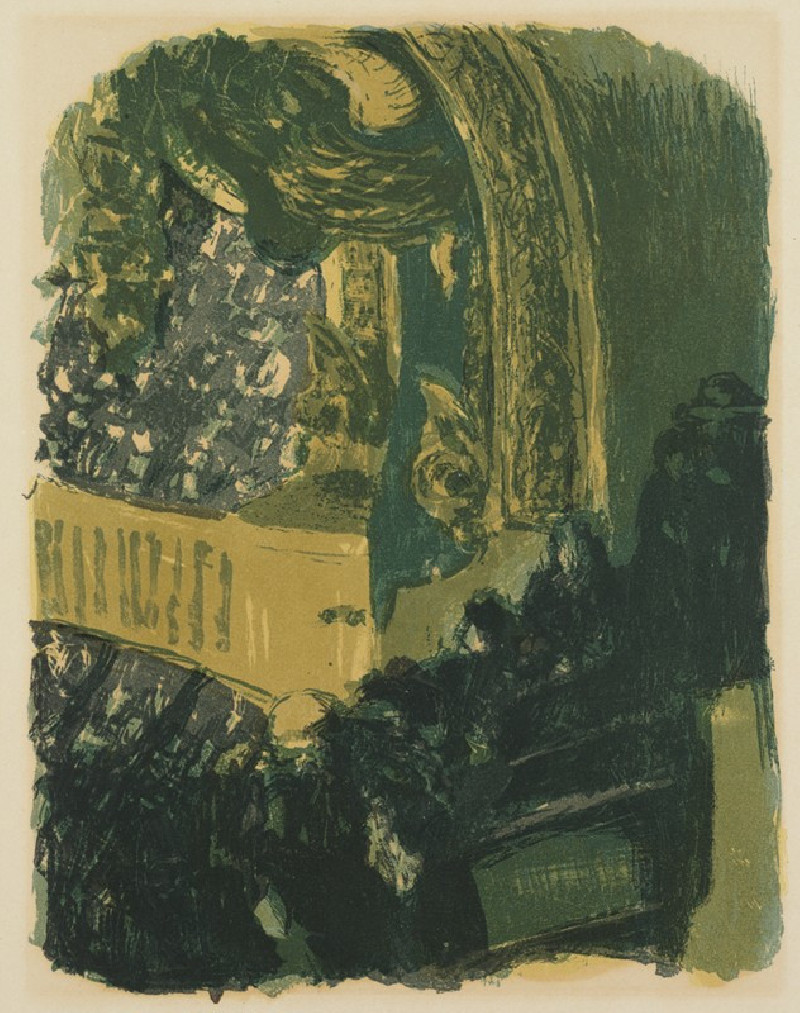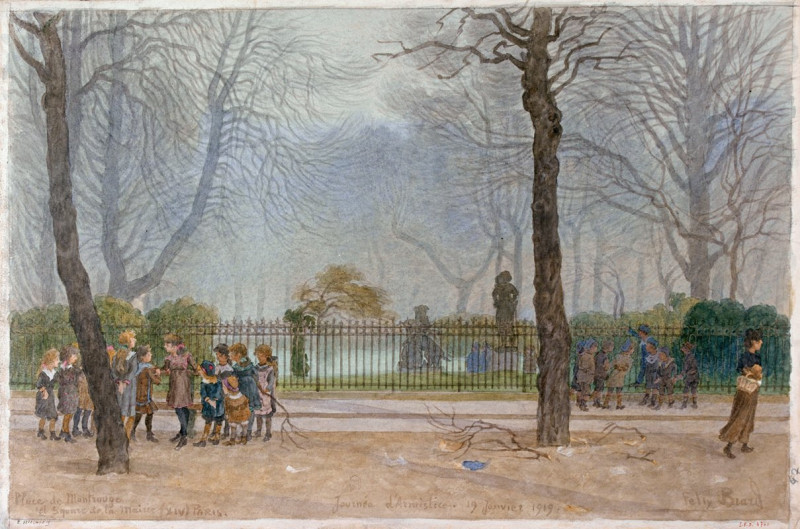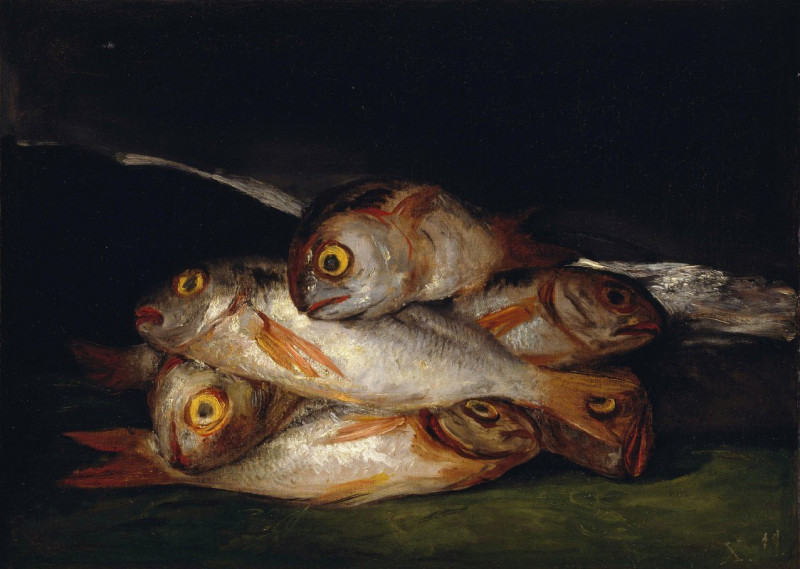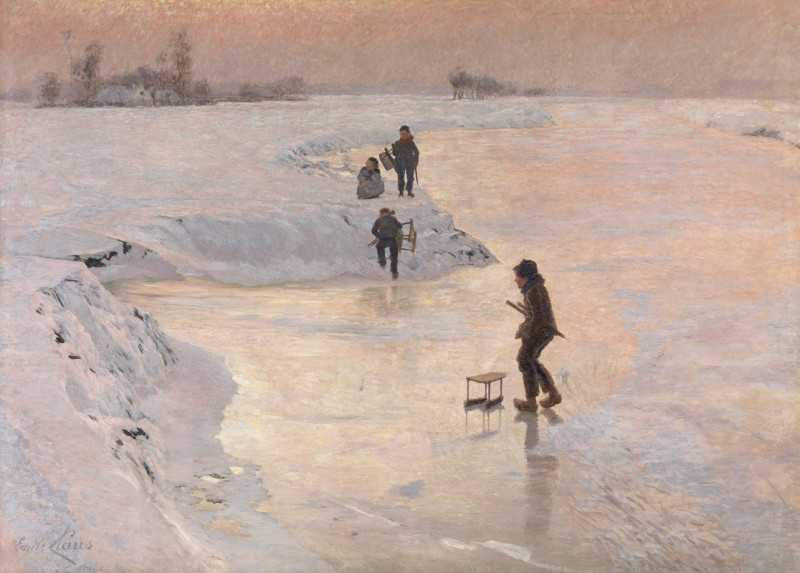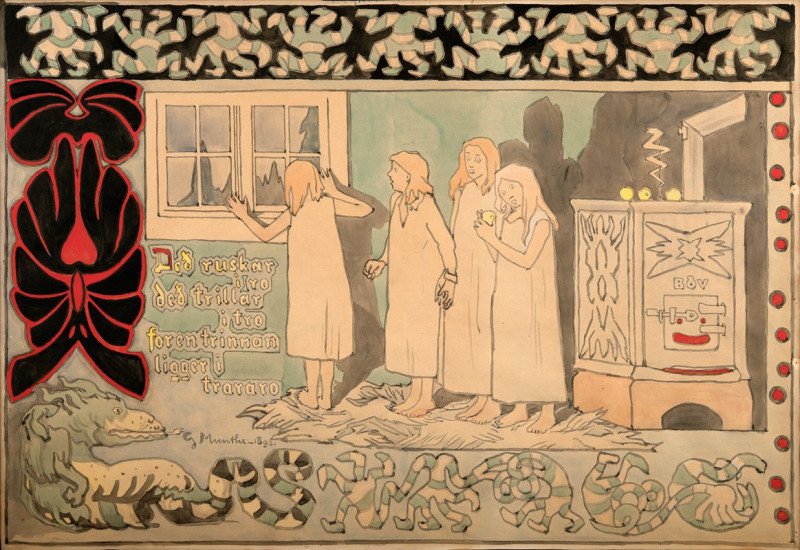Hollyhocks – Polish Autumn (1900)
Technique: Giclée quality print
Recommended by our customers
More about this artwork
"Hollyhocks – Polish Autumn" is a captivating painting by the eminent Polish artist, Jan Stanislawski, created in the year 1900. This artwork exemplifies Stanislawski's mastery in landscape painting and his unique approach to Impressionism. The painting is dominated by the robust, vertical growth of hollyhocks, their deep and vivid pinks and reds starkly contrasting with the subdued background. These towering flowers, which are the focal point of the composition, stretch upward, catching the viewer's eye with their lively hues.Behind the hollyhocks, the composition softly transitions to a serene park scene. Stanislawski employs a more muted palette of greens, browns, and whites to depict the distant trees and a subtly illuminated patch of a walking path or a small clearing. The use of light and shadow in this area provides a sense of depth and tranquility, setting a soothing backdrop against the vibrant foreground.This painting not only celebrates the beauty of nature in autumn but also showcases Stanislawski’s skill in using color and form to evoke emotion and atmosphere.

